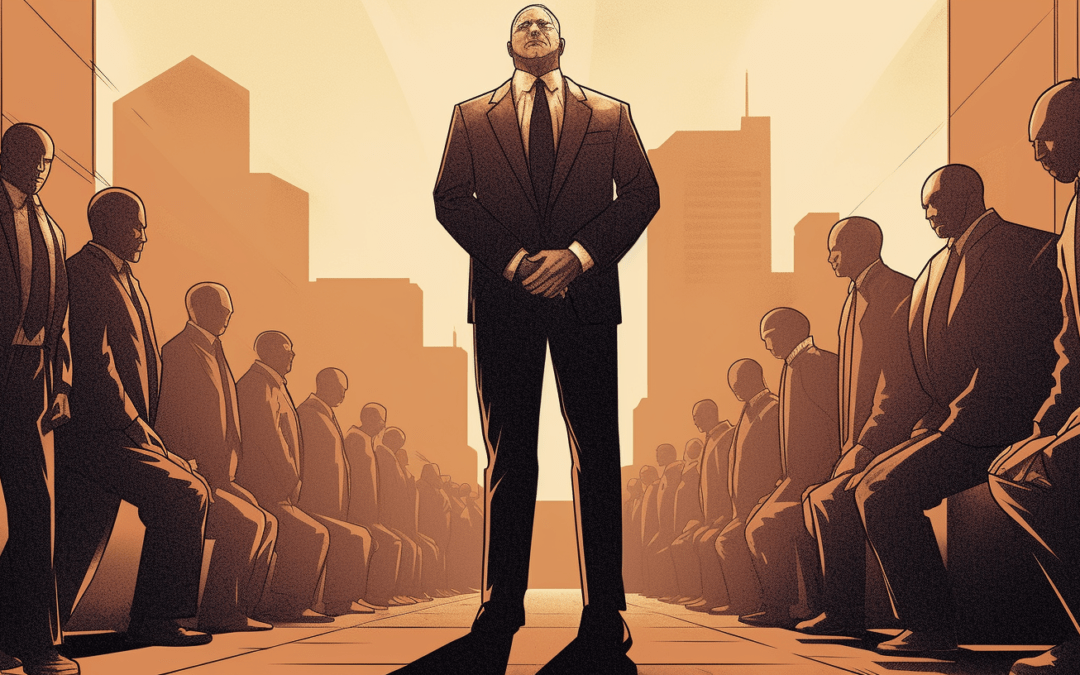Power and the office seem to go together. It was something to aspire to. It was the place where you got things done, or at least you told people to do the things you wanted done. But then 2020 came along and screwed up the whole structure. “Thankfully, that’s all behind us now and we can get to doing work”. We’ve heard some variation of that from numerous CEOs over the past year or so. “We need you back in the office because we work better together.” is the other rhetoric that is echoing through the halls of near-empty office buildings. But if you look at the data, that just ain’t so.
None of the studies in the past 3 years show a positive reason for people to be back in an office setting regularly. It doesn’t benefit the company or the customers, and it doesn’t benefit the workers. So why ignore the facts and do it anyway? It seems to come down to a desire for power. Charlie Chaplin once said, “You need Power, only when you want to do something harmful. Otherwise, love is enough to get everything done.” I think that’s generally true, but old habits are hard to break.
The Old Model
The ruler-subject model has been with us forever. It’s pretty simple – the person ruling over you is separated from you by a thrown, a castle, a state capital, a lectern, a pulpit, or a corner office. They tell you what to do, and they decide what happens when you don’t do what they tell you to do. It’s always had a physical aspect to it, but for the first time that has been taken out of the equation. How are people supposed to kneel at your thrown when they are on a Zoom call?
The same executives who were partying like it was 1999 are now trying to get people to work like it was 2019. It doesn’t help the bottom line, it just seems to be about power. And not just over workers, but also over women.
Power and traditional gender roles seem to go together. Women are outpacing men in college graduation and entry into corporate America. Young men seem to be spending more time gaming and getting high rather than hitting the books and getting high-paying jobs. It’s a real problem. And not because it’s a change in gender roles, but it’s just bad for society. Richard V Reeves recently wrote, “Conservatives are right to worry about the dangers of anomie and detachment among men stripped of their traditional role. But they are wrong to think that the solution is to somehow turn back the clock, making women dependent again to resupply men with purpose. ” You can’t fix one group by trying to bring back a time that you might remember.
The Old Men
In a recent LinkedIn News survey of 17,121 professionals, we got a good look at the work preferences of people by their generation. The only group expressing interest in being in the office were baby boomers. It’s what they grew up with. They were the last generation to use typewriters, drive without seatbelts, bring guns to school without being arrested, and generally have mom at home making a nutritious meal while dad commuted to the office.
Most of the baby boomers are retired, but the tail end of us just turned 60. It should come as no surprise the average age of the Fortune 500 CEOs is just around 60. So you have mostly old men trying to revive old models in a society that doesn’t want or need them.
We can only hope that the call of retirement is stronger than the call of the old ways. Power rarely benefits anyone, and even then only for a short period. I’m not in the majority of baby boomers. I grew up on a farm and never really drank the corporate Kool-Aid. Some of us can see that the world changed in the last three years. Lots of people think they are going to change the world, but most times we have to change ourselves first.



